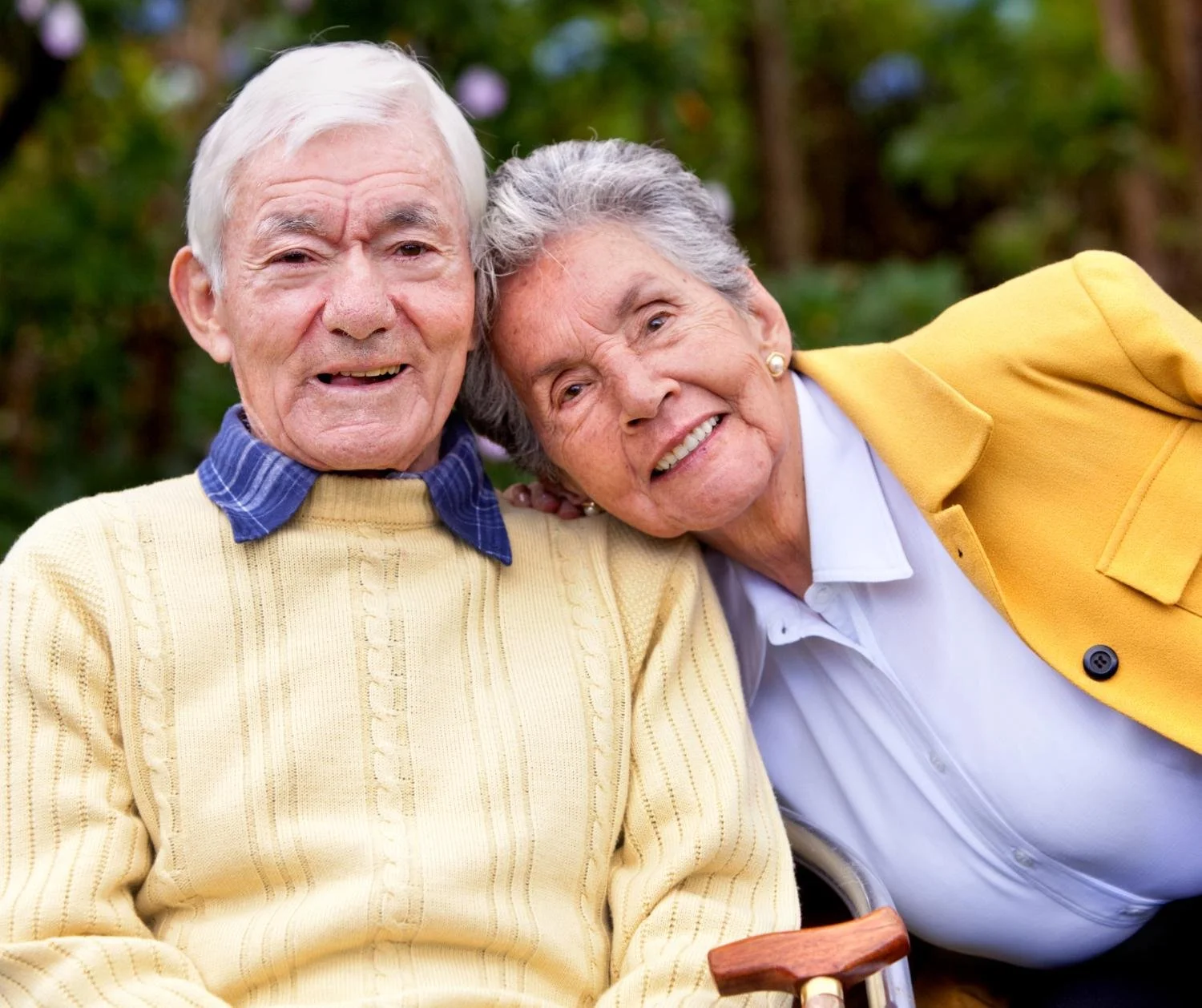Voice Therapy for Parkinson's Disease to Improve Loudness
If you have Parkinson’s disease, you may notice that your voice has become softer, making conversation difficult. You may feel like you are speaking at a normal volume, yet others say they can barely hear you. This can impact your confidence, social interactions, and relationships, but voice therapy for Parkinson’s disease can help you strengthen your voice and enhance your daily communication.
Key Takeaways
Voice therapy for Parkinson’s disease can improve vocal loudness, speech clarity, and overall communication.
Evidence-based programs such as Lee Silverman Voice Treatment (LSVT LOUD), the Parkinson Voice Project SPEAK OUT!, and expiratory muscle strength training (EMST) help individuals speak louder and more clearly.
Compensatory supports like SpeechVive and personal voice amplifiers can further boost vocal volume, while augmentative and alternative communication (AAC) tools provide additional options if speech becomes too difficult.
Many speech therapists design therapy programs that not only improve speech intelligibility but also support more natural expression through clearer articulation, better intonation, and stronger facial expression.
Consistent daily practice and frequent treatment sessions are key to achieving lasting improvements in voice quality, communication confidence, and everyday participation.
How Parkinson’s Disease Affects Speech and Voice Function
How Voice Therapy for Parkinson’s Disease Improves Communication
Lee Silverman Voice Treatment for Parkinson’s Disease
Other Treatment Options for People with Parkinson’s Disease
The Role of Speech-Language Pathologists in Improving Communication for Parkinson’s Disease
Frequently Asked Questions About Voice Therapy for Parkinson’s Disease
How Parkinson’s Disease Affects Speech and Voice Function
Parkinson’s disease affects movement and coordination, including the muscles that control speech and voice. People with Parkinson’s often develop a soft voice, reduced breath support, and a monotone voice that lacks variation. These changes can cause frustration and social withdrawal.
Speech disorders in Parkinson’s disease, such as rushed speech that becomes harder to understand or imprecise articulation, can appear even in the early stages when muscle stiffness and reduced control affect the timing of speech. As the disease progresses, many people also experience reduced facial expression and a slower speech rate, both of which impact natural communication..
Another common problem is reduced sensory feedback, meaning the person feels they are speaking loudly when they are not. This can make it harder to self-correct and maintain a louder voice during conversation.
How Voice Therapy for Parkinson’s Disease Improves Communication
Voice therapy for Parkinson’s disease focuses on retraining the brain and strengthening the muscles used for speech. The goal is to help people speak with greater effort, energy, and clarity, while enhancing their overall communication.
A speech-language pathologist evaluates speech function, voice quality, and communication needs to create a personalized plan. Exercises often include:
Breathing training to support longer, louder phrases
Pitch variation practice to improve vocal flexibility
Vocal loudness exercises to strengthen volume control
Facial expression and articulation drills to improve spoken communication
Many speech therapy programs also integrate cognitive exercises to help manage attention and memory challenges that affect communication. Through regular practice, individuals with Parkinson’s can enhance their speech intelligibility, voice quality, and confidence.
Lee Silverman Voice Treatment for Parkinson’s Disease
LSVT LOUD (Lee Silverman Voice Treatment) is one of the most widely researched speech therapy programs for Parkinson’s disease. This approach teaches people to speak more loudly, improve speech intelligibility, and maintain clearer communication in various settings.
How LSVT LOUD Works
LSVT LOUD targets increased vocal loudness through structured, high-effort voice exercises. Participants complete one-hour sessions, four days a week, for four weeks, under the guidance of a certified LSVT LOUD speech therapist. Each session includes repetitive vocal tasks that retrain the brain to recognize what a “normal” loud voice feels like.
People with Parkinson’s practice daily voice exercises at home between treatment sessions. This consistent practice helps reinforce newly learned skills, maintain stronger voices, and improve speech clarity in background noise or group conversations.
Some speech-language pathologists incorporate cognitive exercises, speech treatment tools, and FDA-cleared medical devices, such as the LSVT Companion, which facilitates at-home practice.
LSVT Speech Therapy
Check out our blog about LSVT speech therapy for more information.
Evidence Supporting LSVT LOUD
Randomized controlled trials show that LSVT LOUD increases voice volume, speech clarity, and facial expression for people with Parkinson’s. Participants often report feeling more confident and socially engaged after completing the program. Some research also shows secondary improvements in swallowing and breath control, helping reduce the risk of aspiration pneumonia.
Secondary Benefits
In addition to enhancing communication, research suggests that LSVT LOUD can lead to secondary benefits, such as:
Improved breath support and respiratory control, making it easier to sustain longer phrases.
Better swallowing function, with stronger vocal and throat muscles reducing the risk of aspiration pneumonia.
Improved facial expressions, as increased vocal effort often carries over into greater facial movement, helps conversations feel more natural and expressive.
Stronger cognitive engagement, since the structured, high-effort program requires focus, memory, and attention.
Carryover into daily movement and communication, supporting overall participation and quality of life.
Other Treatment Options for People with Parkinson’s Disease
While LSVT LOUD remains the most widely researched, several other treatment approaches also benefit people with Parkinson’s disease:
SPEAK OUT! (from the Parkinson Voice Project) emphasizes speaking with intent to improve vocal clarity, strength, and overall communication.
Expiratory muscle strength training (EMST) targets respiratory support, helping individuals project their voice and sustain longer phrases.
Compensatory devices such as SpeechVive and portable voice amplifiers can provide immediate support by making speech louder in daily conversations.
AAC tools (augmentative and alternative communication), ranging from low-tech communication boards to high-tech speech-generating devices, ensure individuals always have a way to express themselves, especially in more advanced stages of the disease.
These speech treatment programs and tools are often combined into a personalized plan depending on the individual’s stage of Parkinson’s, communication needs, and daily lifestyle. Early intervention is especially valuable, as it helps maintain natural speech patterns and strengthens vocal function before communication difficulties become more pronounced.
The Role of Speech-Language Pathologists in Improving Communication for Parkinson’s Disease
Speech-language pathologists play a central role in addressing the voice difficulties and speech disorders that often accompany Parkinson’s disease. They assess voice quality, clarity, and communication effectiveness using tools such as the Voice Handicap Index alongside perceptual and acoustic measures. Speech therapists also consider related concerns, such as cognitive impairments, which can affect memory, attention, and communication in daily life.
Based on this evaluation, speech pathologists determine which evidence-based program (such as LSVT LOUD, SPEAK OUT!, or EMST) or compensatory strategy (like voice amplifiers, SpeechVive, or AAC tools) will be most effective for each individual. They also refer clients for an in-person swallowing evaluation when there are concerns about safety during eating and drinking.
Importantly, SLPs guide while also acting as a supportive sounding board for clients to practice newly learned skills in a safe and structured environment.
Frequently Asked Questions About Voice Therapy for Parkinson’s Disease
1. How does Parkinson’s disease affect the voice?
Parkinson’s disease and related disorders affect the muscles responsible for speech and vocal control, leading to reduced loudness, unclear speech, and a voice that may sound monotone. These symptoms result from weakened coordination and reduced sensory feedback, making it harder to maintain a normal volume during conversation.
2. What is LSVT LOUD?
LSVT LOUD is a speech therapy program designed to help individuals with Parkinson’s disease improve their vocal loudness and speech intelligibility. Guided by certified speech therapists, it uses structured exercises to retrain the brain for normal voice effort and consistent communication.
3. How long does it take to see improvement from voice therapy?
Most people notice improvement in voice strength and clarity within four weeks of consistent speech therapy. Programs for voice therapy in Parkinson's disease include daily exercises that can be continued at home to maintain long-term results and enhance communication in social settings. Voice therapy programs are recognized for their secondary benefits for individuals with slurred speech, cognitive problems, and other speech issues.
4. Can voice therapy help with swallowing issues in Parkinson’s disease?
Yes. While the primary focus of voice therapy is improving communication, it can also provide secondary benefits for swallowing. Strengthening the vocal and throat muscles, improving breath support, and enhancing coordination may help reduce the risk of aspiration pneumonia and support safer, more efficient swallowing.
5. What if I have trouble keeping up with daily speech therapy practice?
Your program can be modified to match your energy level and cognitive needs. Shorter, more frequent exercises can help you stay consistent and make steady progress toward a stronger, louder voice.
How Connected Speech Pathology Can Help
Connected Speech Pathology provides online speech therapy for individuals with Parkinson’s disease and related communication disorders. Our team provides evidence-based treatment, including LSVT LOUD, SPEAK OUT!, and EMST, to help individuals enhance their vocal loudness and speech clarity.
Each speech therapy program is customized to a person’s interests, needs, and progress goals. Speech therapy focuses on enhancing speech intelligibility, facial expressions, and voice quality to facilitate stronger daily communication.
Online speech therapy offers convenient access to expert speech therapists without the need for travel. People with Parkinson’s can complete regular treatment sessions, maintain consistency with daily practice, and experience significant improvements in natural speech and increased volume.
Summary
Voice therapy for Parkinson’s disease helps people regain control of their speech, increase vocal loudness, and improve clarity. Programs like LSVT LOUD, SPEAK OUT!, and EMST, supported by compensatory devices such as SpeechVive, voice amplifiers, and assistive communication tools, provide people with multiple pathways to communicate effectively.
With consistent practice, early intervention, and professional guidance, individuals with Parkinson’s can speak more confidently, preserve their independence, and stay connected in daily life.
About the Author
Allison Geller is a communication coach, speech-language pathologist, and founder of Connected Speech Pathology, an international online practice providing professional communication coaching and speech therapy for children, teens, and adults. With more than two decades of experience, she has worked in medical and educational settings, published research on aphasia, and leads a team of specialists helping clients improve skills in public speaking, vocal presence, accent clarity, articulation, language, fluency, and interpersonal communication.










